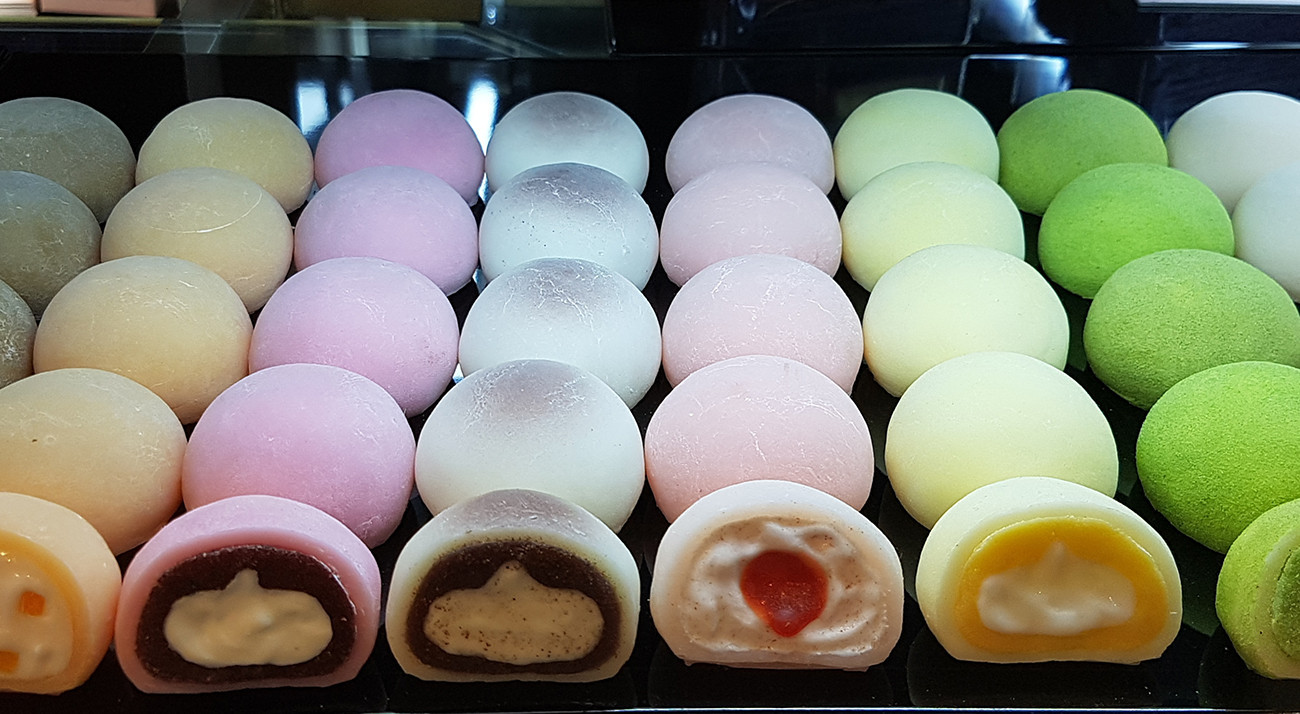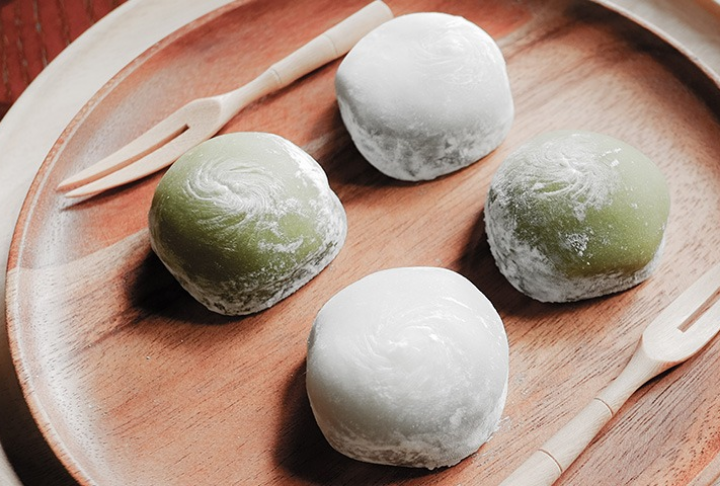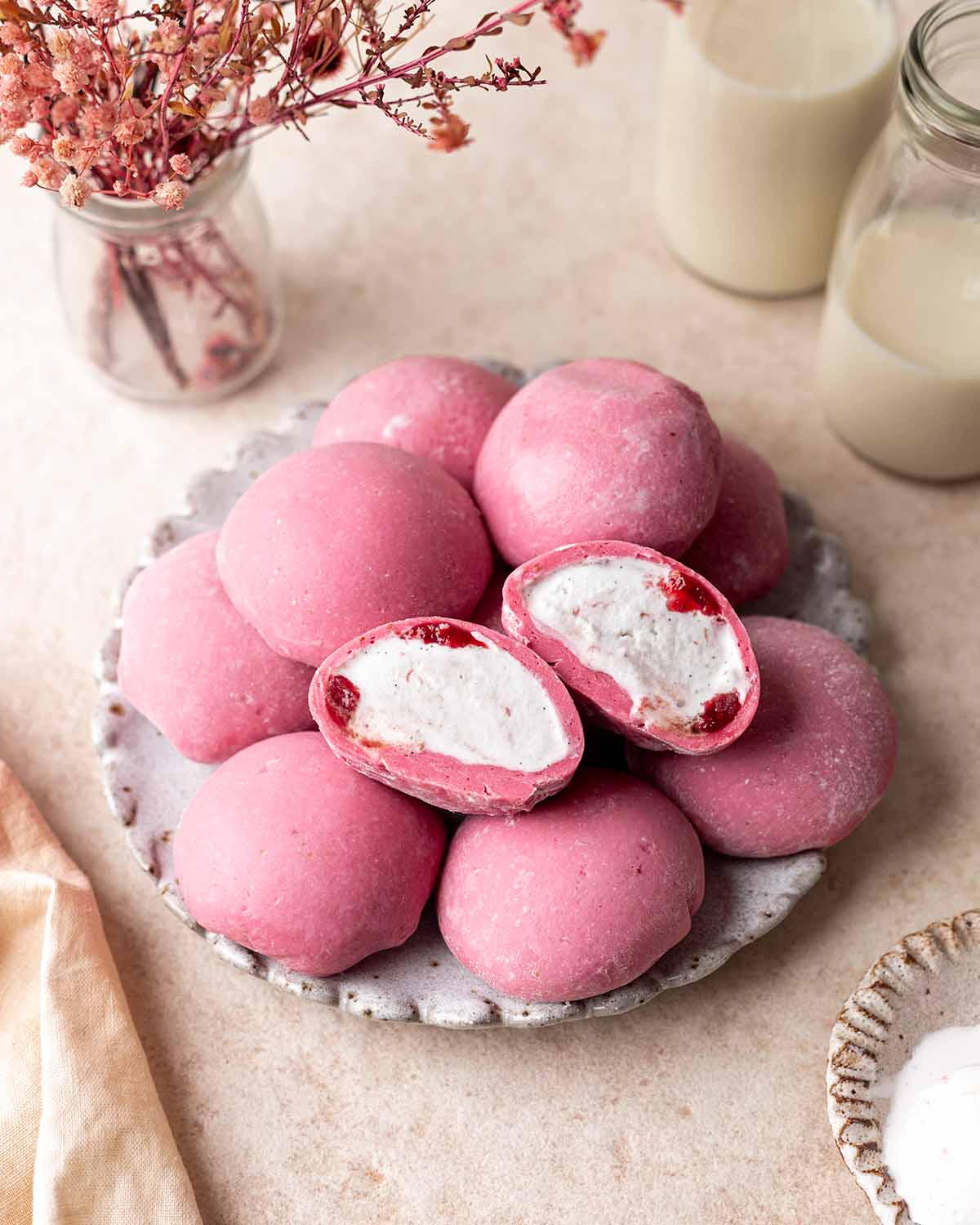The Japanese Dessert - Mochi

Mochi is a traditional Japanese rice cake made from glutinous rice, also known as mochigome. The history of mochi dates back over a thousand years and has deep cultural roots in Japan. Here's a brief overview of the history of mochi:
- Ancient Origins:
The origins of mochi can be traced back to China, where a similar rice cake called "mijiang" was made over a thousand years ago. Mochi was introduced to Japan in the Yayoi period (300 BCE to 300 CE) along with the cultivation of rice.
- Rituals and Ceremonies:
Mochi became an integral part of Japanese culture, especially in religious rituals and ceremonies. It was often used as an offering to the gods and was associated with various Shinto and Buddhist ceremonies.
- Mochitsuki Tradition:
Mochi was traditionally made through a labor-intensive process called mochitsuki, where glutinous rice was steamed and then pounded into a sticky, elastic dough using a large wooden mallet and a mortar. This process is often associated with celebrations like the Japanese New Year (Oshogatsu).
- Seasonal Variations:
Mochi has evolved over the centuries, and different regions in Japan developed their own variations of the rice cake, incorporating various flavors, fillings, and coatings. Seasonal mochi treats became popular, with specific types associated with certain festivals or times of the year.
- Mochi in Modern Times:
In the modern era, mochi has expanded beyond traditional ceremonies and is now enjoyed as a popular dessert. Mochi is not only eaten in its plain form but also used as an ingredient in various dishes and desserts. It is commonly filled with sweetened red bean paste, ice cream, or fruit, and may be coated with powdered sugar or kinako (roasted soybean flour).
- International Popularity:
Mochi has gained popularity outside of Japan and can be found in many Asian communities worldwide. Its unique texture and versatility have made it a favorite ingredient for both traditional and innovative desserts.
- Commercial Production:
With advancements in food technology, mochi is now also commercially produced and widely available in pre-packaged forms. This has made it more accessible to a global audience.
Overall, mochi has a rich history deeply intertwined with Japanese culture and continues to be enjoyed both for its cultural significance and its delicious taste.

Mochi Recipe;
Ingredients:
- 2 cups glutinous rice flour (mochiko)
- 1/2 cup sugar
- 1 1/2 cups water
- Potato starch or cornstarch (for dusting)
Instructions:
- Prepare Steamer:
Set up a steamer and bring the water to a boil.
- Mix Dry Ingredients:
In a mixing bowl, combine the glutinous rice flour and sugar. Mix well.
- Add Water:
Gradually add water to the dry ingredients, stirring continuously to avoid lumps. Mix until you have a smooth batter.
- Steam the Mochi:
Pour the batter into a heatproof dish lined with parchment paper. Smooth the top with a spatula. Place the dish in the steamer, cover, and steam for about 30-45 minutes until the mochi is set.
- Cool and Cut:
Allow the steamed mochi to cool to room temperature. Once cooled, dust a clean surface with potato starch or cornstarch. Transfer the mochi to the dusted surface.
- Cut into Pieces:
Cut the mochi into bite-sized pieces using a sharp knife or scissors. Dust each piece with more potato starch or cornstarch to prevent sticking.
- Serve:
Your plain mochi is ready to be served! Enjoy the soft and chewy texture of this traditional Japanese treat.
Optional Variations:
- Filling:
If you want to add a filling, you can place a small amount of sweetened red bean paste, ice cream, or fruit in the center of each mochi piece before sealing the edges.
- Coatings:
You can roll the mochi pieces in various coatings like kinako (roasted soybean flour), cocoa powder, or matcha powder for added flavor.
Remember that mochi is versatile, and you can get creative with fillings and coatings based on your preferences. Enjoy your homemade mochi!
Mochi Recipe Videos:
Chewy Milk Mochi in 5 Minutes;
4 Ingredient Homemade Mochi Ice Cream;
Sweet Mochi Recipe;
References;
- "Mochitsuki: A New Year's Tradition". Japanese American National Museum. December 5, 2013. Archived from the original on September 30, 2020.
- Isono, Yoshinobu; Emiko Okamura; Teruo Fujimoto (1990). "Linear Viscoelastic Properties and Tissue Structures of Mochi Cake". Agric. Biol. Chem. 54 (11): 2941–2947. doi:10.1271/bbb1961.54.2941.
- Bean, M.M; Esser, C.A.; Nishita, K.D. (1984). "Some Physiochemical and Food Application Characteristics of California Waxy Rice Varieties". Cereal Chemists. 61 (6): 475–479.
- The Oxford Companion to Sugar and Sweets. Oxford University Press. April 2015. ISBN 9780199313624.
- Mochi. Nihon-Bunka Iroha Jiten.
- Kotobank Mochi. The Asahi Shimbun.
- History of mochi. Zenkoku Mochi Kogyo Kyodo Kumiai
Thank you for sharing your time!
You can complete great comment tasks at here. #dessert #japanese #rice #sweet #cooking #cuisines #foodinspiration #food #chefs


























































